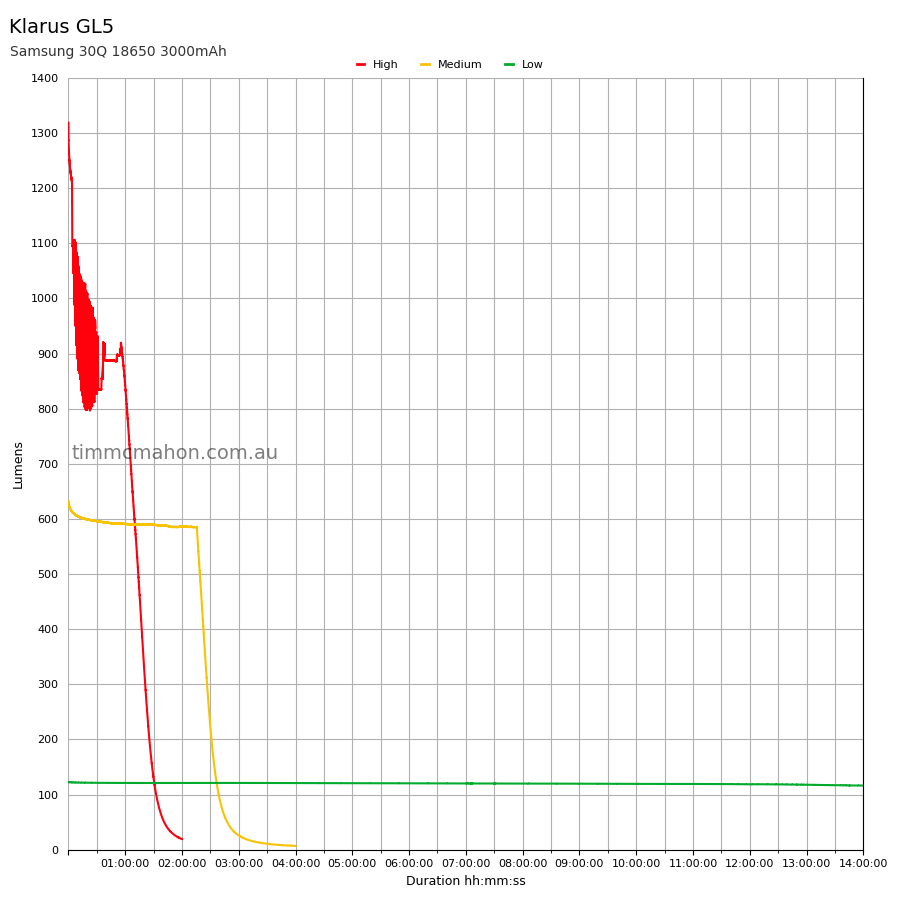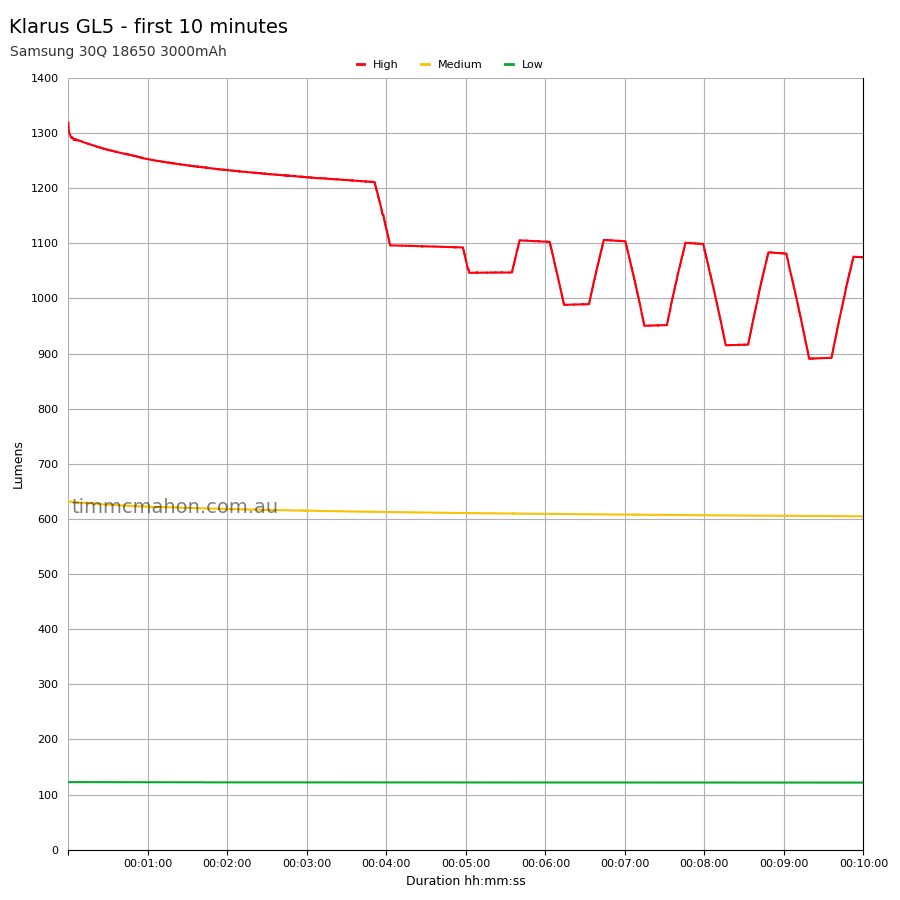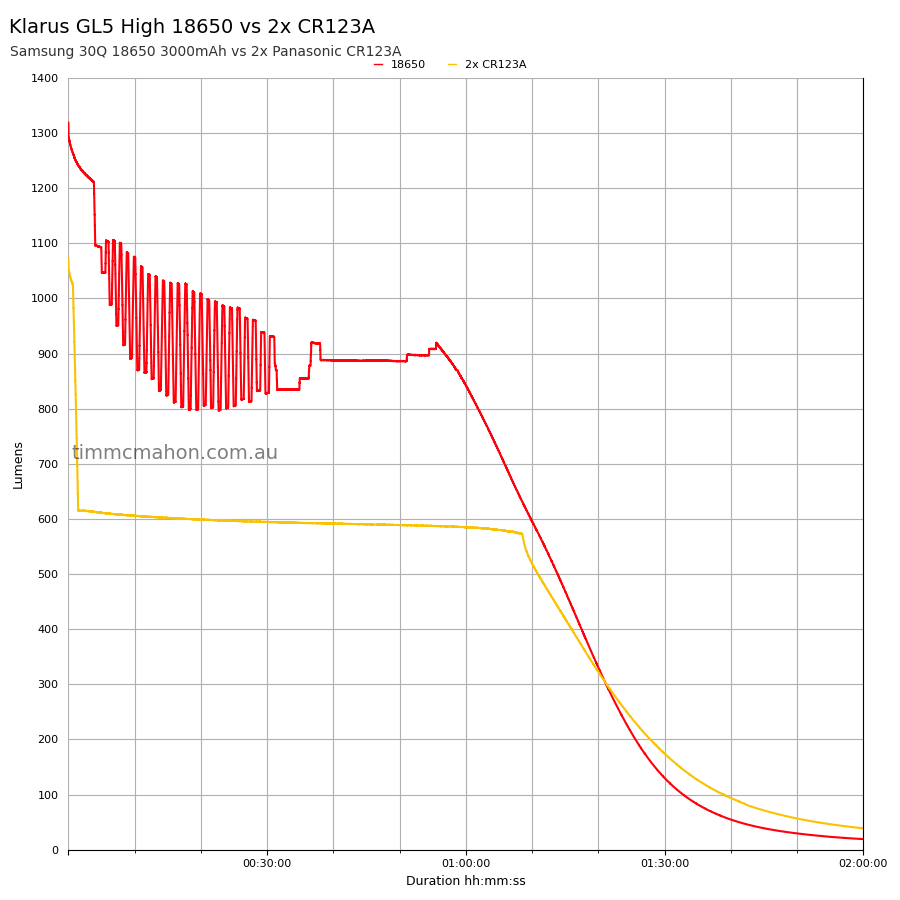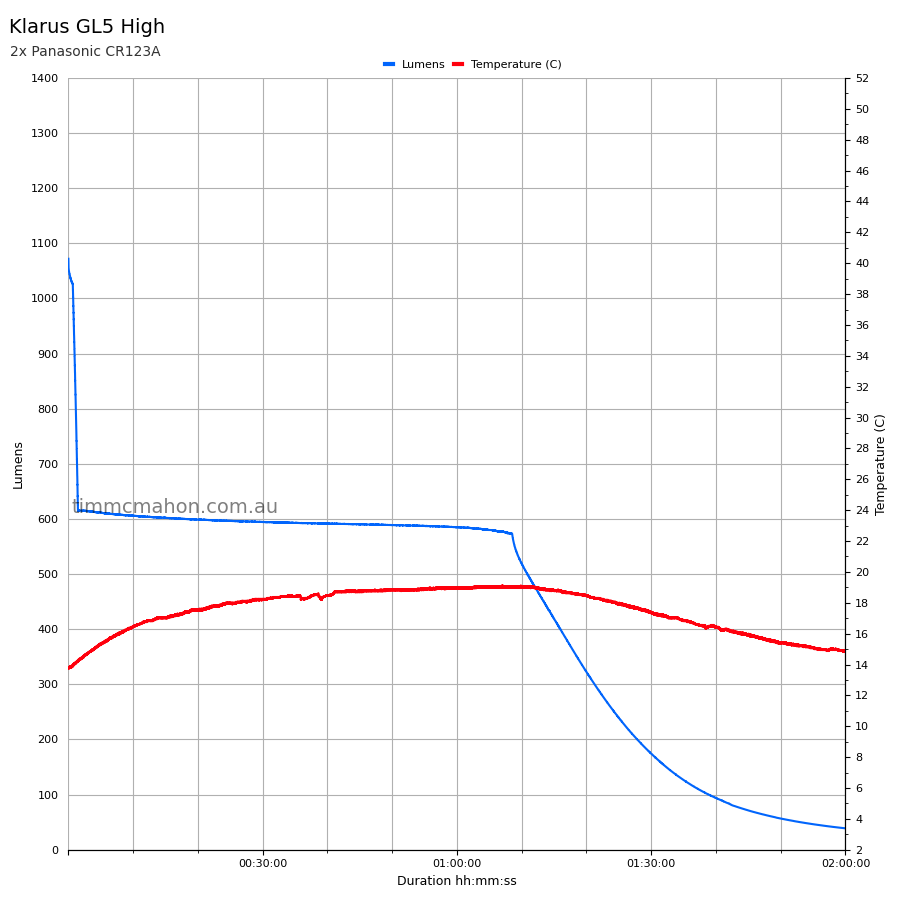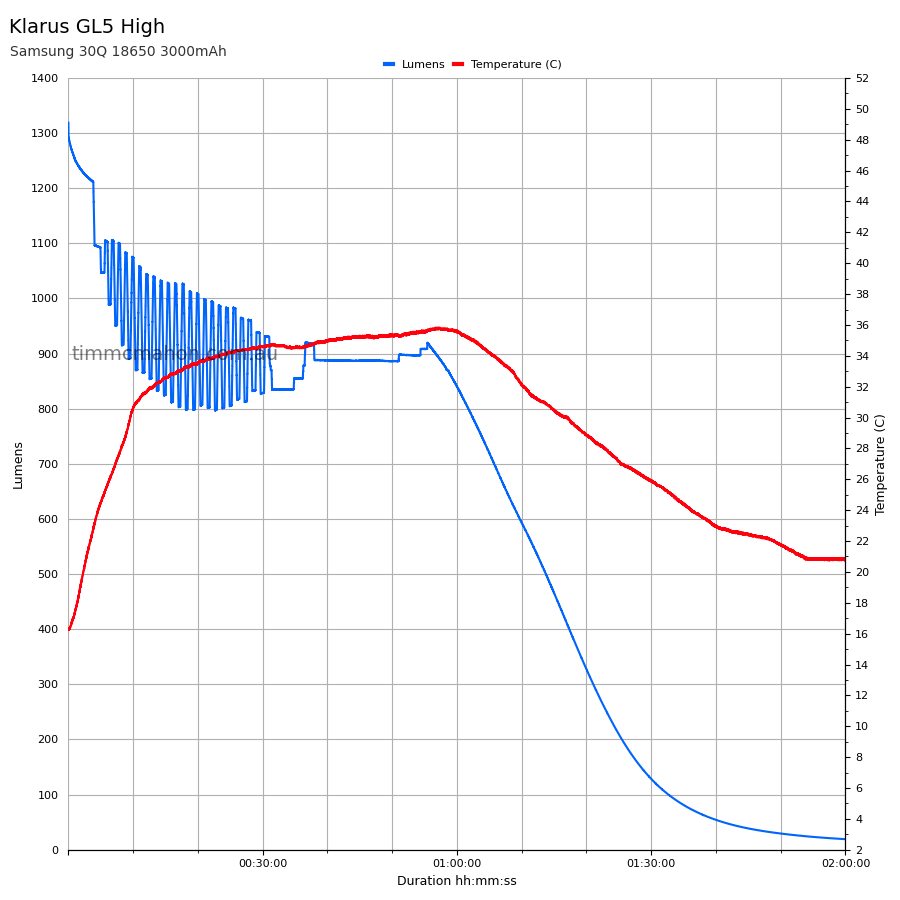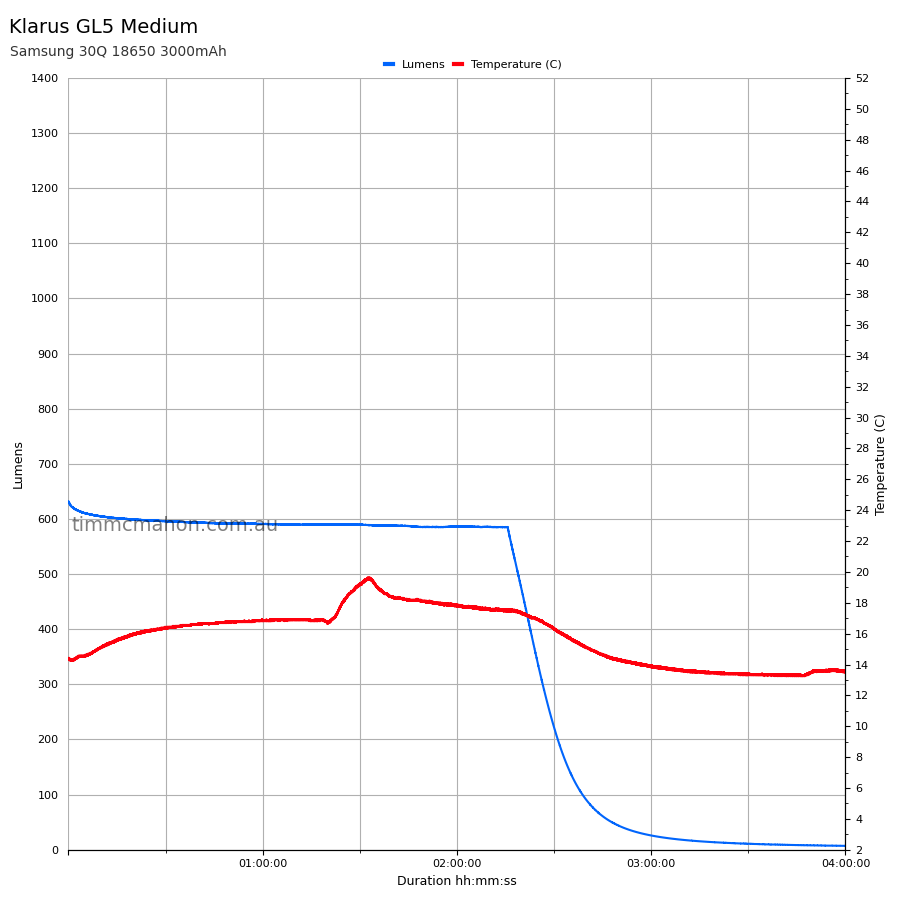Klarus GL5 Foregrip Light Review
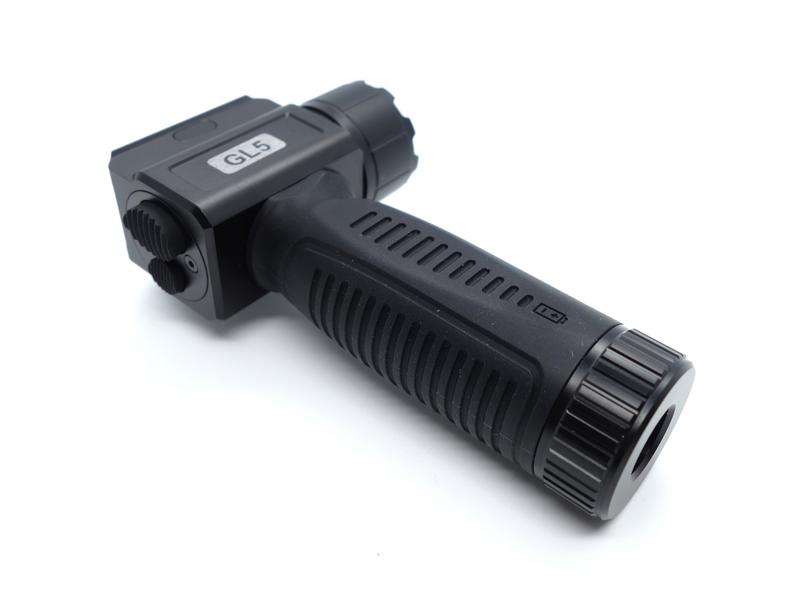
Klarus GL5 Foregrip Light#
- Specifications
- Introduction
- Torch in use
- Build quality
- LED, bezel, lens, reflector and beam
- Size
- User interface and driver
- Batteries and charging
- Performance
- Beamshots
- Conclusion
- Product page
Specifications#
| Brand/model | Klarus GL5 |
|---|---|
| LED | Cree XP-L2 HD V6 6500K |
| Maximum lumens | 1,200 lm |
| Maximum beam intensity | 18,320 cd |
| Maximum throw | 270 m |
| Battery | 1*18650 Li-ion, 2*CR123A |
| Onboard charging | No. |
| Material | Aluminium |
| Modes | 3 |
| Blinkies | Strobe |
| Reflector | Smooth |
| Waterproof | IPX8 |
| Review date | July 2022 |
Introduction#
It has been exciting to test the Klarus GL5 Foregrip Light! This is the first time that I have used a vertical foregrip on a rifle. The quality and ease of use has made this a wonderful introduction to the world of vertical foregrips.
Klarus has been around since 2011 and do their own R&D and manufacturing. They are known for their dual-switch tactical torches and supply law enforcement, military and outdoor enthusiasts.
liteshop.com.au kindly provided this Klarus GL5 Foregrip Light for review along with the Klarus GL4 Rail Light. I have not been paid for this review nor have I held back my opinions.
Packaging#
The Klarus GL5 came in a sturdy white retail box with a picture of the torch on the front and specifications on the sides.
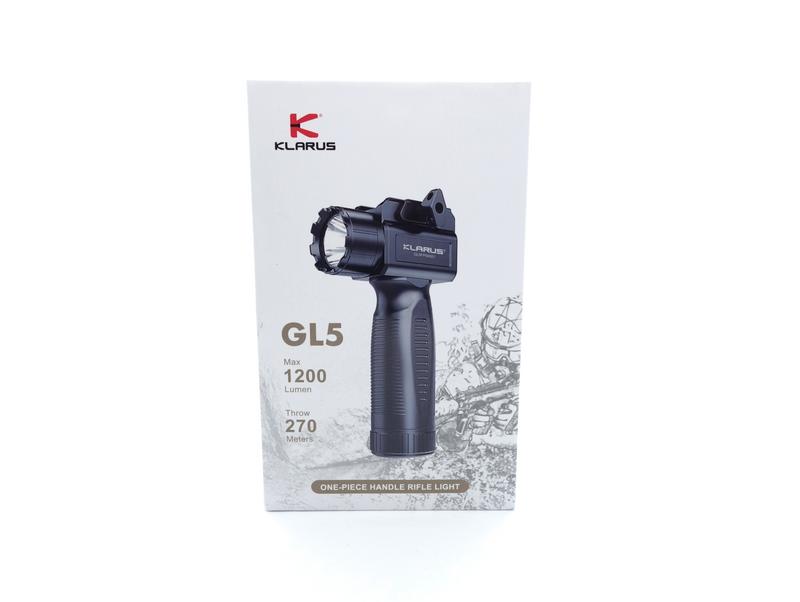
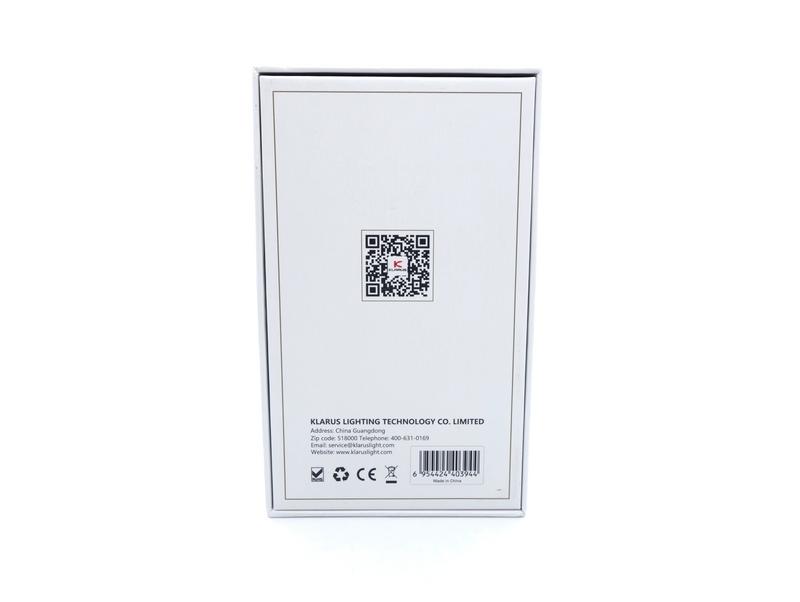
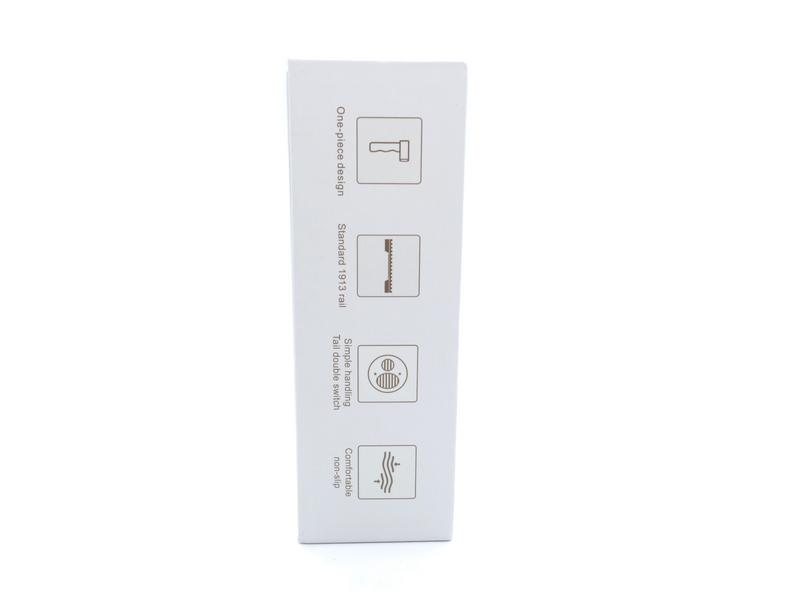
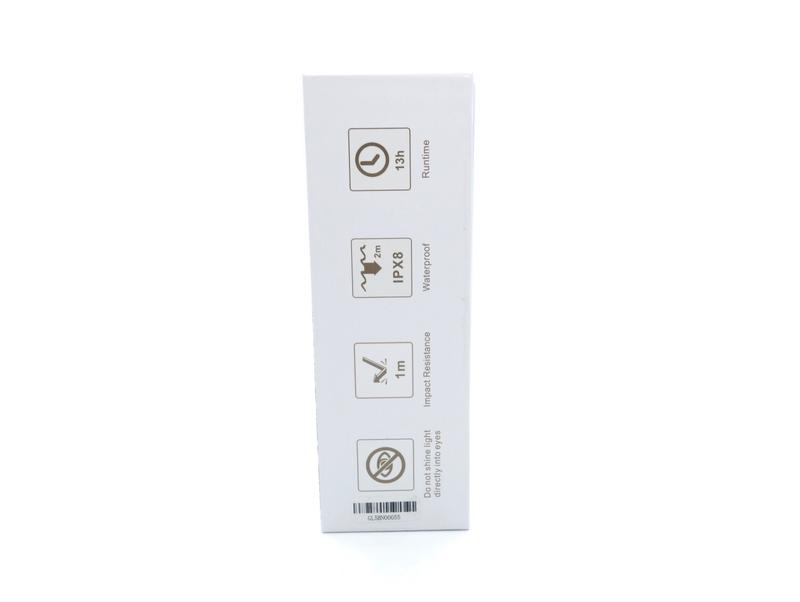
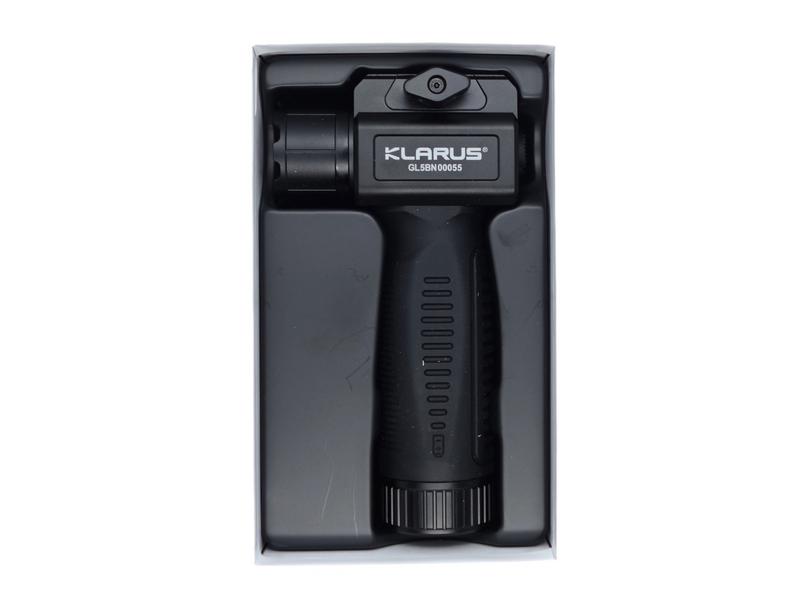
The following was included in the box:
- Klarus GL5 Vertical-Grip Light
- 2 x Panasonic CR123A
- 1 x O-ring
- User manual
The spare o-ring and user manual were hidden under the tray.
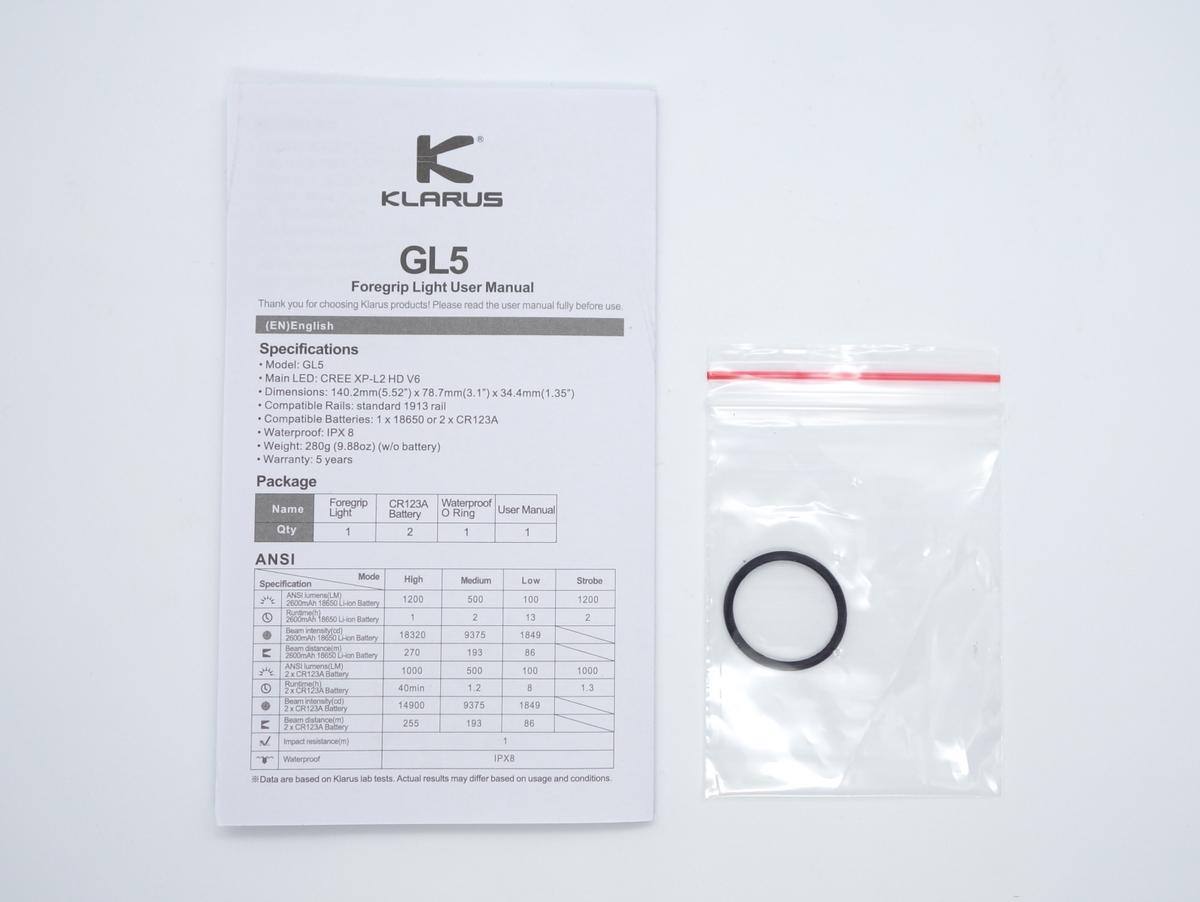
Torch in use#
I attached a swivel stud to picatinny rail adapter to a rifle so that the Klarus GL5 could be attached. The adapter that I used was not very adjustable so the torch was fixed at an angle that pointed slightly up.
Rifles with a chassis system and rails allow this torch to sit parallel with the barrel. These types of rifles are more commonly used by law enforcement and the military rather than by hunters in Australia.
The Klarus GL5 has a thumb screw to clamp the torch onto a rail. The lack of quick release gives me confidence that torch will remain attached.
The grip is thick and comfortable to hold and the two buttons also have a lot of grip when pressing them.
The torch can tailstand and does not easily fall over.
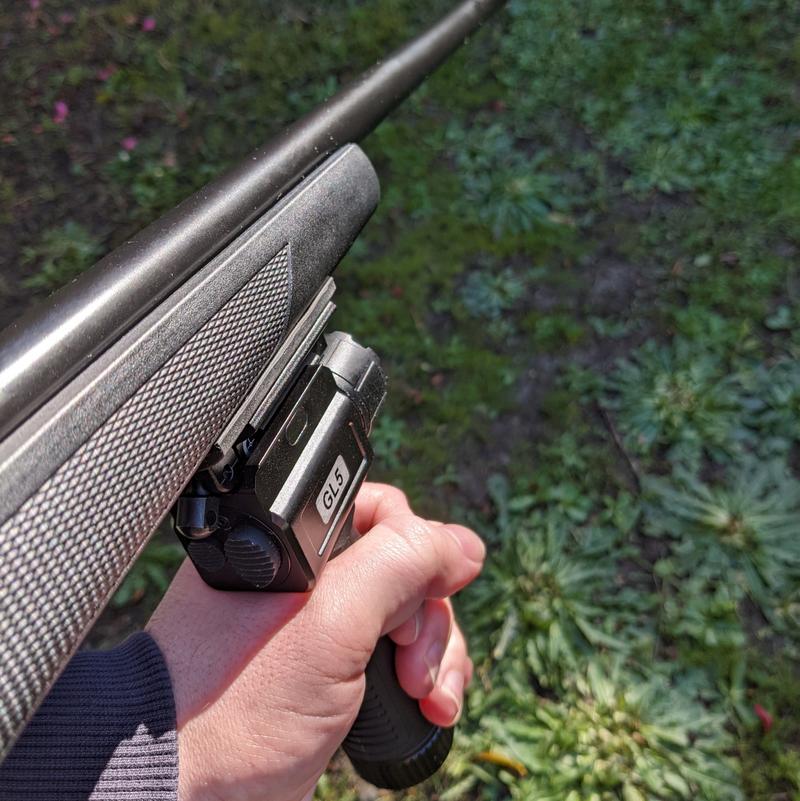
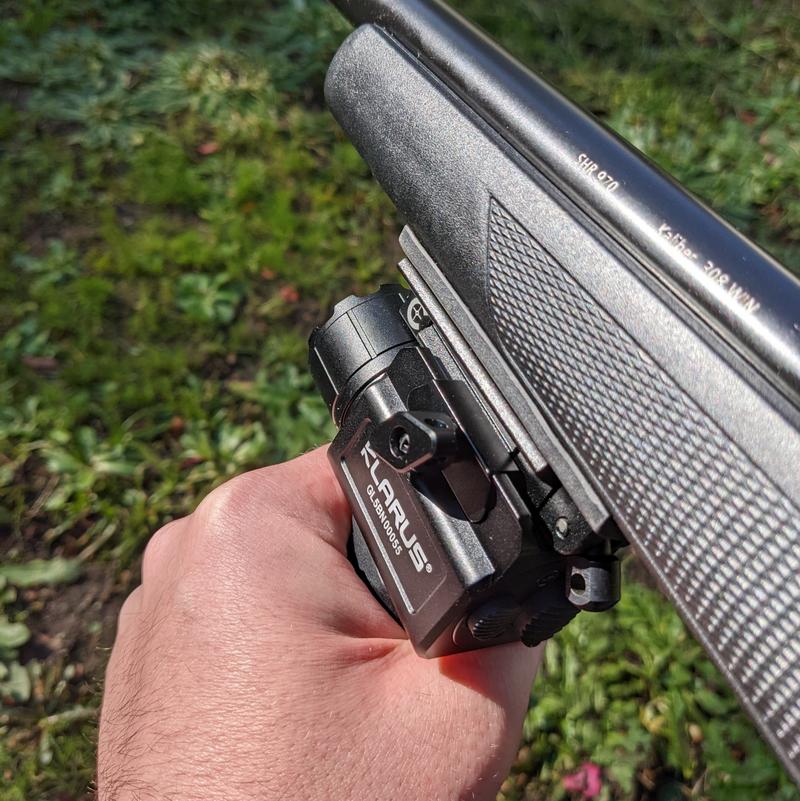
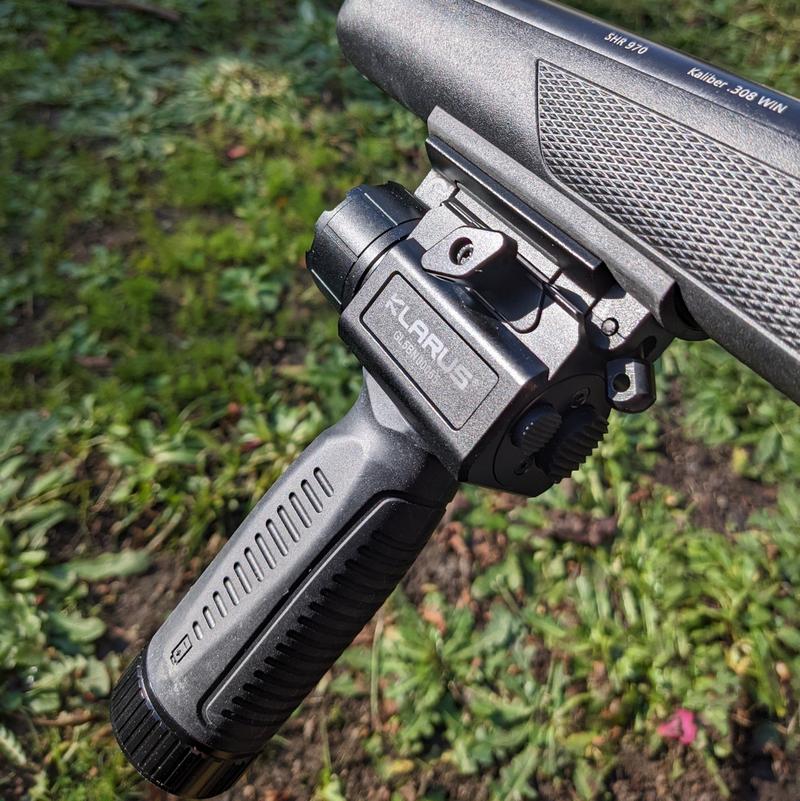
Build quality#
The Klarus GL5 has a lightweight aluminium body with a matte black finish and a rubber grip. There are no sharp edges around the grip but the corners could be made smoother so that they do not dig into my index finger or thumb when pressing buttons or strangling the grip.
The base of the grip has a battery symbol to indicate that batteries must be inserted with the negative end going in first. I found it a bit unconvential to insert a battery in this direction after having inserted a battery with the positive end facing the head in all my other torches. There appears to be reverse polarity protection because I made the mistake of inserting a battery the wrong way a few times and the torch continued to work after changing the direction of the battery.
Threads for tailcap came lightly lubricated with grease. The tailcap turns smoothly, has knurling to add extra grip and it is fun to turn.
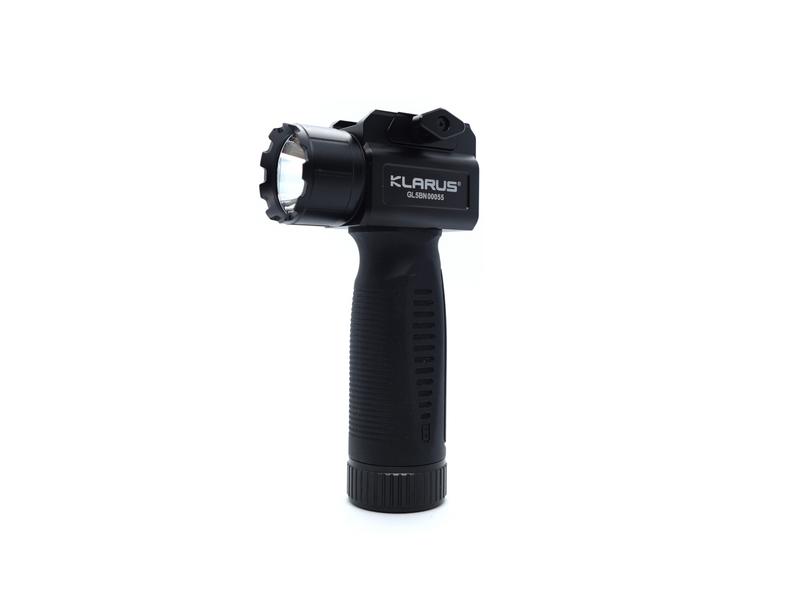
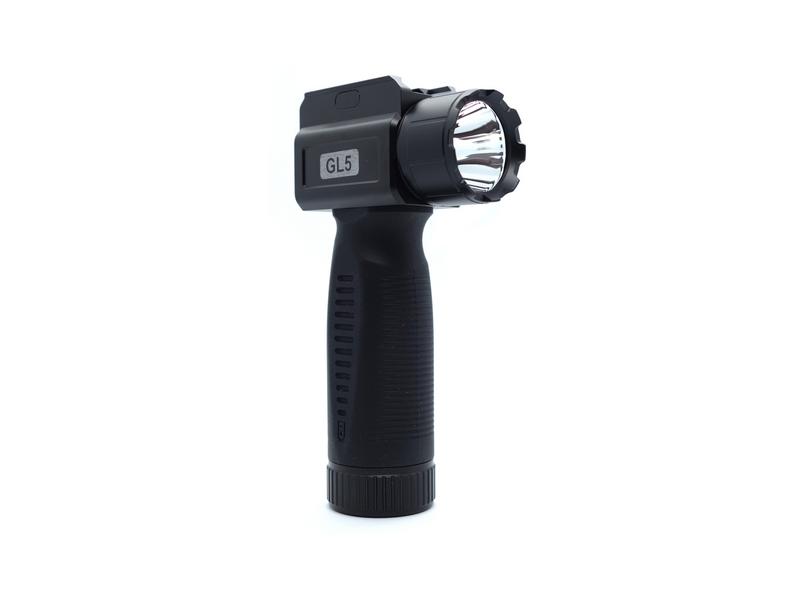
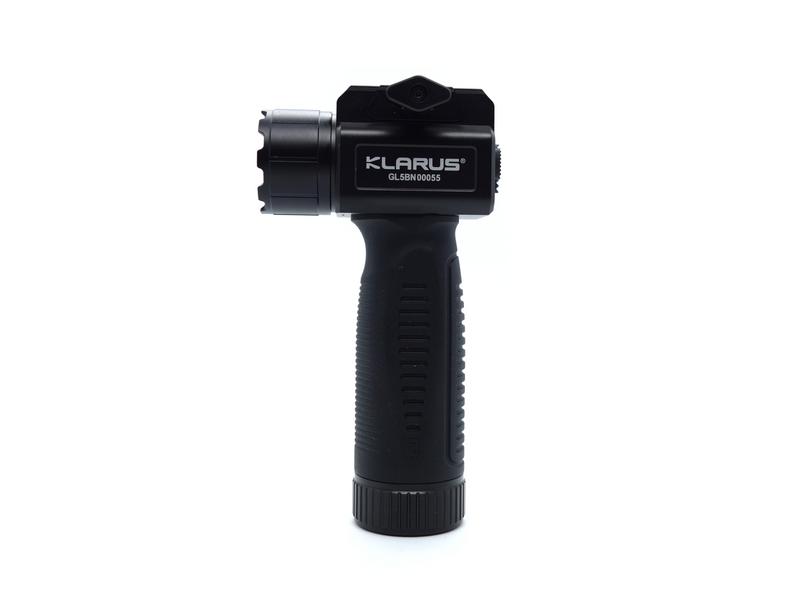
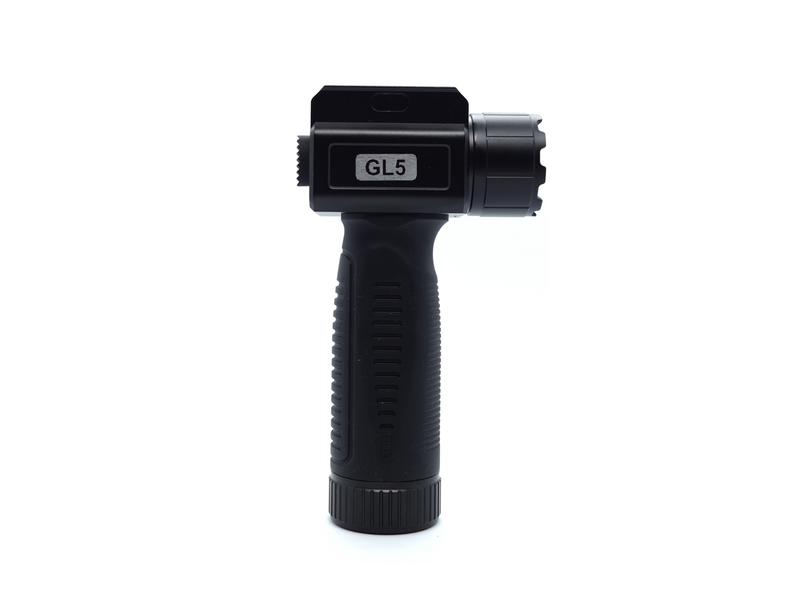
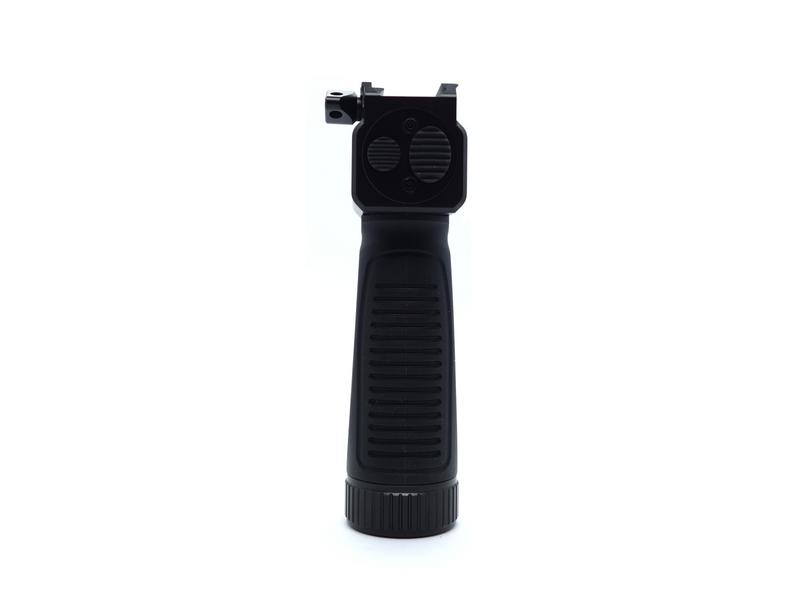
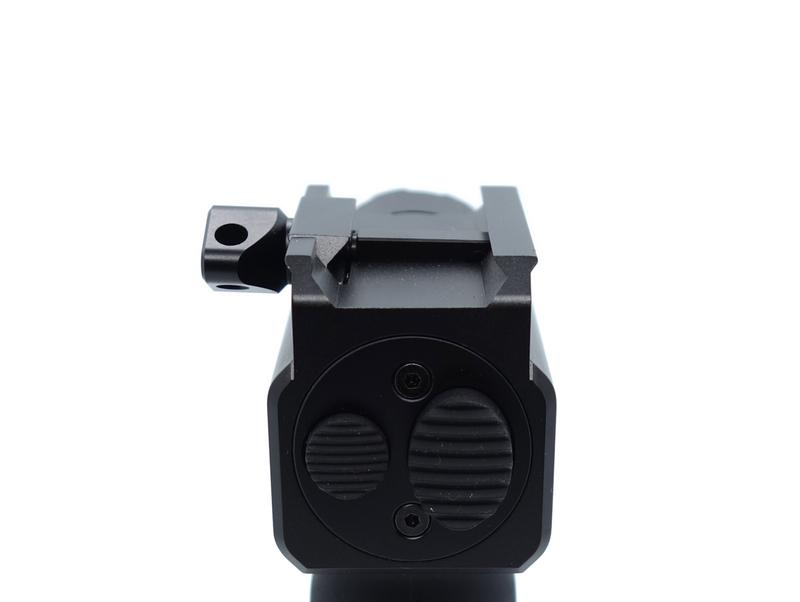
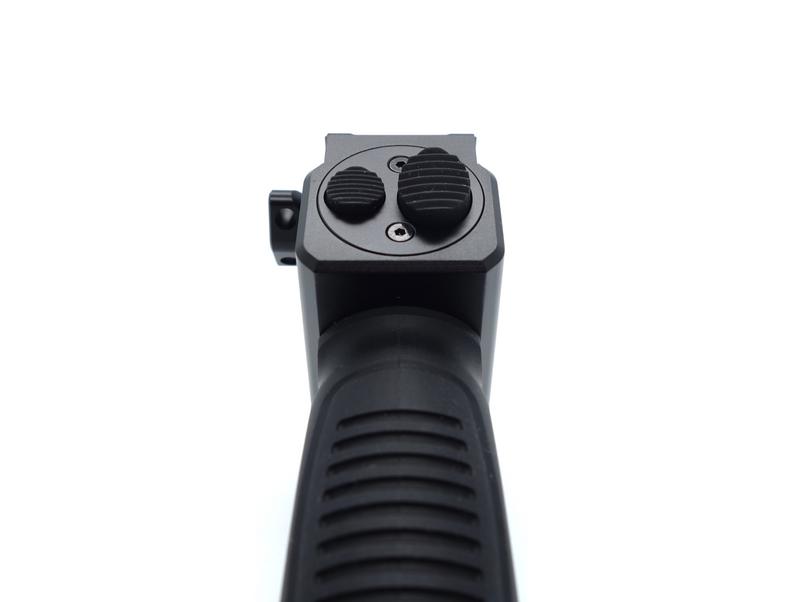
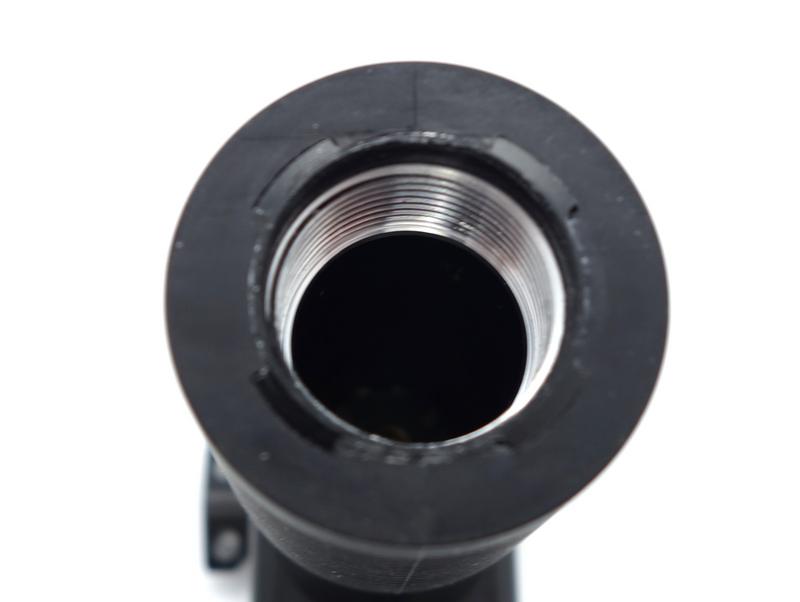
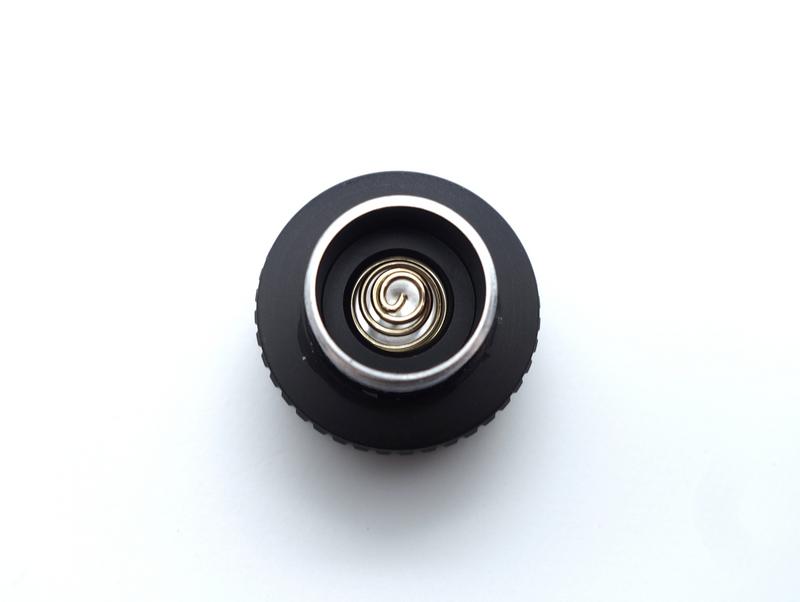
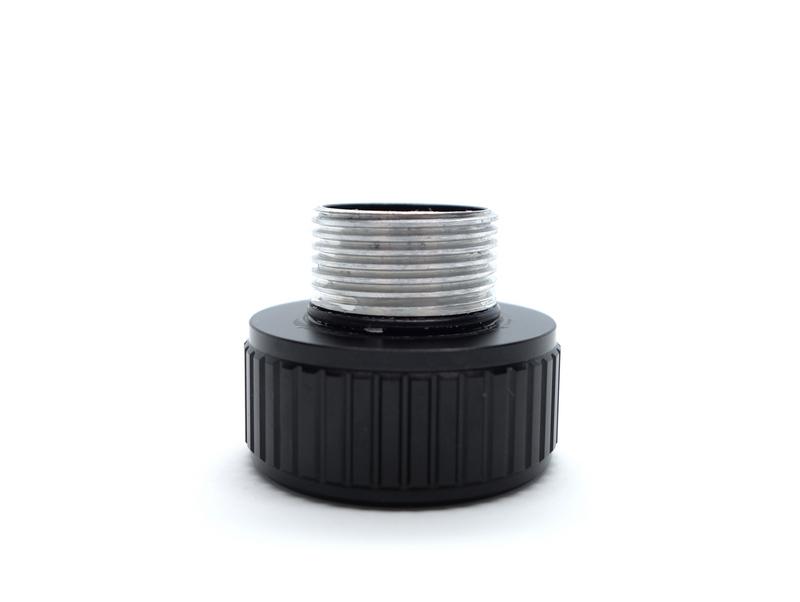
LED, bezel, lens, reflector and beam#
The Klarus GL5 has one Cree XP-L2 HD V6 6500K LED with a smooth reflector.
The tube around the reflector extends into a small strike bezel to give the torch a tactical look and feel.
The glass lens does not appear to have an anti-reflective coating.
There is so much tint shift, as you would expect with a Cree XP-L2 6500K LED. The beam has a green corona and a purple halo around the spill.
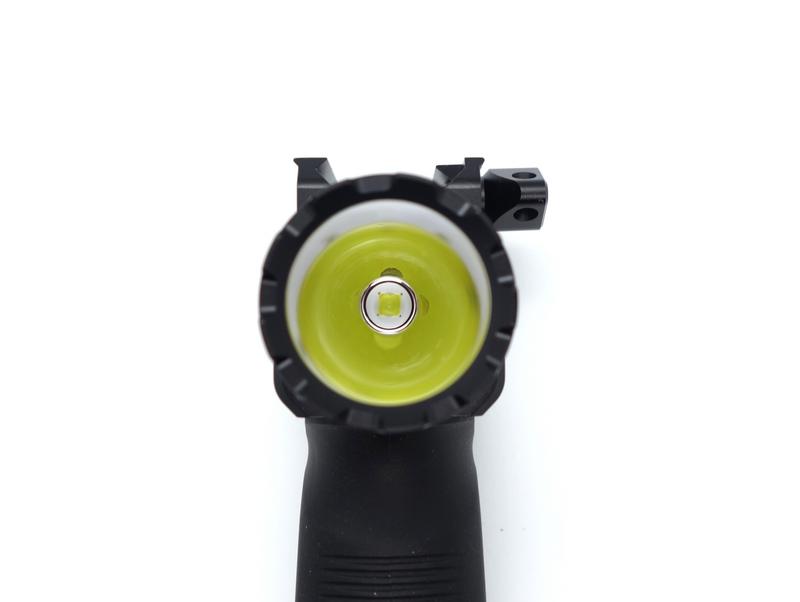
I have taken Correlated Colour Temperature (CCT) and Colour Rendering Index (CRI, RA of R1-R8) measurements with the GL5 positioned one metre away from an Opple Light Master Pro III (G3).
The CCT measured ranged from about 6000K to 7500K and the CRI is about 70.
The Delta u, v is slightly positive and the tint looks slightly green on Low and Medium modes. It is closer to pure white on High.
| Mode | CCT (K) | CRI (Ra) | x | y | Duv |
|---|---|---|---|---|---|
| Low | 6122 | 69.4 | 0.3189 | 0.3411 | 0.0063 |
| Medium | 5755 | 69.9 | 0.3265 | 0.3471 | 0.0057 |
| High | 7461 | 73.8 | 0.3015 | 0.3072 | -0.0023 |
Calculate Duv from CIE 1931 xy coordinates
Size#
Dimensions#
I took the following measurements using digital callipers.
| Measurement | Unit (mm) |
|---|---|
| Torch height | 140.6 |
| Torch length | 78.7 |
| Head width | 35.2 |
| Bezel diameter | 34.5 |
| Tube diameter | 37.3 |
Weight#
I took the following measurements using a digital scale.
| Weight | Unit (g) |
|---|---|
| Torch with battery (18650) | 331.9 |
| Torch | 286.2 |
| Battery (18650) | 45.7 |
User interface and driver#
The Klarus GL5 has a tactical user interface with High, Medium, Low and Strobe modes.
| State | Action | Result |
|---|---|---|
| Off | Click Main switch | On (High) |
| Off | Hold Mode switch | Momentary Strobe |
| Off | Hold Mode switch for 2 seconds | Strobe |
| On | Click Main switch | Off |
| On | Click Mode switch | Cycle (High, Medium, Low) |
Low voltage protection#
There does not appear to be Low Voltage Protection. I let the Klarus GL5 run for five days on High and the 18650 battery voltage went down to 2.22V. I turned the torch off so that the battery would not be damaged. I would expect LVP to switch the torch off automatically at 2.5-2.7V if present.
Light output is significantly reduced when the battery is low. This is a good indication that the CR123A batteries should be replaced or an 18650 Li-ion battery should be recharged. The battery might go dead if you accidentally leave the torch running for days and it may not be safe to recharge an 18650 Li-ion battery that has gone below 2V.
PWM#
I did not notice any visible PWM (flickering) for Low and Medium modes. However, the Intelligent Thermal Protection System caused the light output to go up and down within the first thirty minutes of using the High mode.
What I like about the UI#
- Direct access to High.
- Direct access to Strobe.
What could be improved#
- I personally like the user interface as it is for tactical purposes.
Batteries and charging#
Battery#
Two Panasonic CR123A batteries were included inside the torch. The batteries each arrived with a voltage of 3.24V and were isolated with a plastic tab.
I was able to use 2x CR123A, 1x Unprotected flat top 18650 and 1x Protected button top 18650 in the Klarus GL5.
I used a Samsung 30Q 18650 Li-ion battery for testing, except for a High runtime test where I used the two included CR123A batteries.
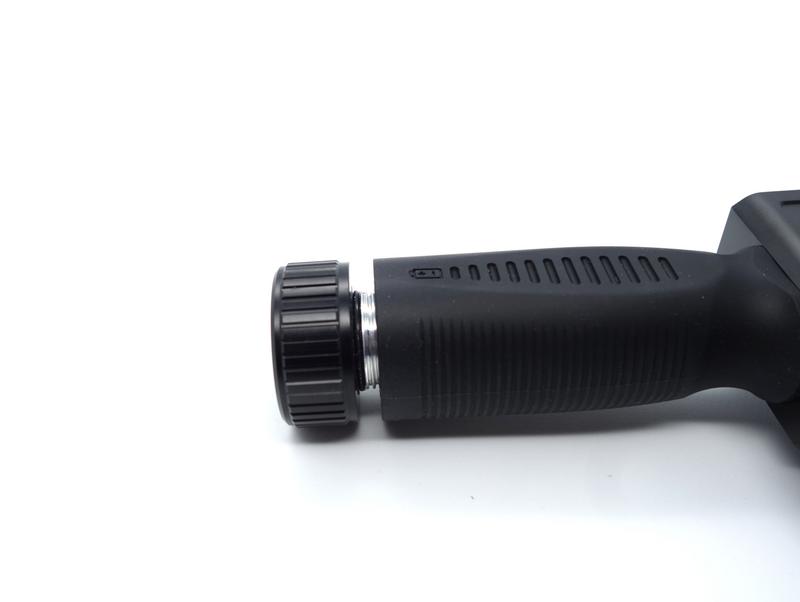
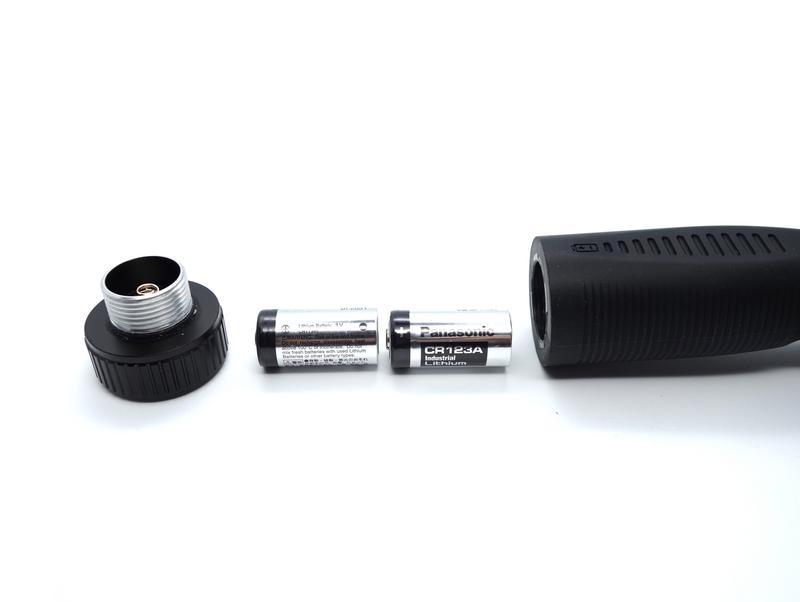
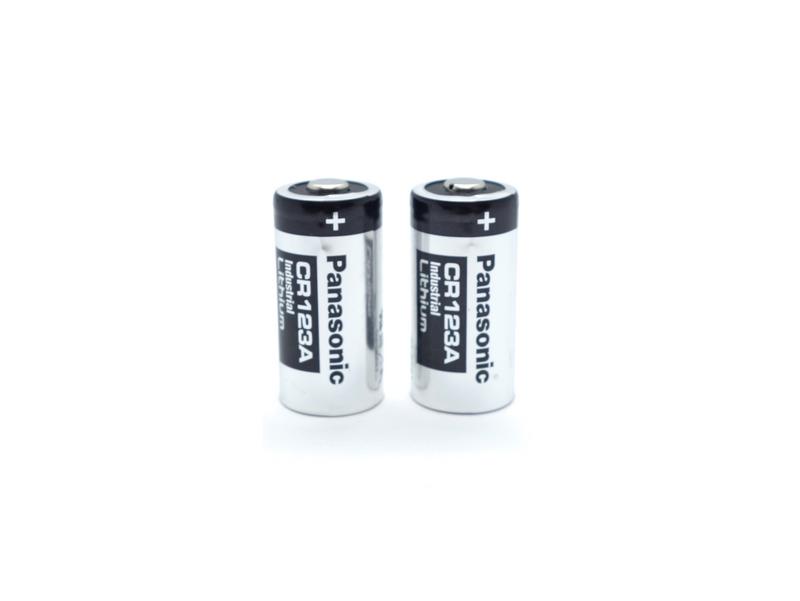
Charging#
There is no built-in charging. This torch is intended for law enforcement where two CR123A batteries may be used and disposed of. A rechargeable 18650 Li-ion battery can be used, but you will need an external charger for it.
Performance#
Specifications from the manual:
| Battery | Category | High | Medium | Low | Strobe |
|---|---|---|---|---|---|
| 18650 Li-ion | Output (lm) | 1,200 | 500 | 100 | 1,200 |
| 18650 Li-ion^ | Runtime (h) | 1 | 2 | 13 | 2 |
| 18650 Li-ion | Candela (cd) | 18,320 | 9,375 | 1,849 | |
| 18650 Li-ion | Range (m) | 270 | 193 | 86 | |
| 2xCR123A | Output (lm) | 1,000 | 500 | 100 | 1,000 |
| 2xCR123A | Runtime (h) | 40min | 1.2 | 8 | 1.3 |
| 2xCR123A | Candela (cd) | 14,900 | 9,375 | 1,849 | |
| 2xCR123A | Range (m) | 255 | 193 | 86 |
^A 2600mAh 18650 Li-ion battery was used for runtime testing by Klarus.
Lux Meter: UNI-T UT383BT
DMM: UNI-T UT139C has been used to measure current under 10A.
Lumen measurements#
| Mode | Amps at start | Specs | Lumens @turn on | Lumens @30 sec | Lumens @10 min |
|---|---|---|---|---|---|
| Low | 0.17 A | 100 lm | 122 lm | 122 lm | 121 lm |
| Medium | 1.14 A | 500 lm | 631 lm | 625 lm | 605 lm |
| High | 3.89 A | 1200 lm | 1318 lm | 1269 lm | 1074 lm |
Standby drain#
22.8 µA.
Runtime graphs#
I built a lumen tube and forked bmengineer’s project RuTiTe to add support for a VEML7700 light sensor and MCP9808 temperature sensor with help from Owen. Calibration lights from maukka were used.
Note: Lumen measurements may be off by more than 10% with my DIY lumen tube.
I charged the included battery to 4.19V in an external charger before each runtime test.
I stopped recording at 2 hours for High, 4 hours for Medium and 14 hours for Low. The torch kept running with a very low output. There does not appear to be Low Voltage Protection where the torch turns off when a low voltage has been reached.
High (2x CR123A) started at 1072 lumens, quickly dropped to 615 lumens at 1 minute 30 seconds, maintained around 600 lumens for just over an hour before stepping down to 38 lumens. The maximum of 1072 lumens is similar to the specifications (1000 lumens) and the runtime of just over an hour exceeds the specifications (40 minutes).
High (18650) started at 1318 lumens, dropped to around 900 lumens within 15 minutes, maintained around 900 lumens for almost an hour, and gradually dropped off to less than 150 lumens by 1 hour 30 minutes.The maximum of 1318 lumens exceeds the specifications (1200 lumens) and the runtime is similar to the specifications (1 hour).
Medium (18650) started at 631 lumens, maintained around 590 lumens for 2 hours 15 minutes, and gradually dropped down to less than 100 lumens by 2 hours 38 minutes. The maximum of 631 lumens is slightly higher than the specifications (500 lumens) and the runtime slightly exceeds the specifications (2 hours).
Low (18650) started at 122 lumens and maintained over 116 lumens for 14 hours. I stopped recording at 14 hours. The maximum of 122 lumens is slightly higher than the specifications (100 lumens) and the runtime slightly exceeds the specifications (13 hours).
Klarus used an 18650 2600mAh battery for runtime tests while I used a Samsung 30Q 18650 3000mAh with a bit more capacity. My runtime measurements are slightly better with a higher capacity battery.
I would love to see Klarus add a breakdown of the runtime in their future specifications so that people can see how High steps down over time rather than assuming that it might last for 1 hours at 1,200 lumens. For example: 1200-900 lm, 3min-57min.
Throw#
I took lux measurements with a UT383BT at 30 seconds for each mode. Each mode was measured at five metres.
| Mode | Specs (cd) | Specs (m) | Candela measured (cd) | Distance (m) |
|---|---|---|---|---|
| Low | 1,849 | 86 | 2,150 | 92 |
| Medium | 9,375 | 193 | 12,300 | 221 |
| High | 18,320 | 270 | 29,675 | 344 |
Beamshots#
5000K WB, f3.2, 3.2" shutter speed, ISO 100
Low
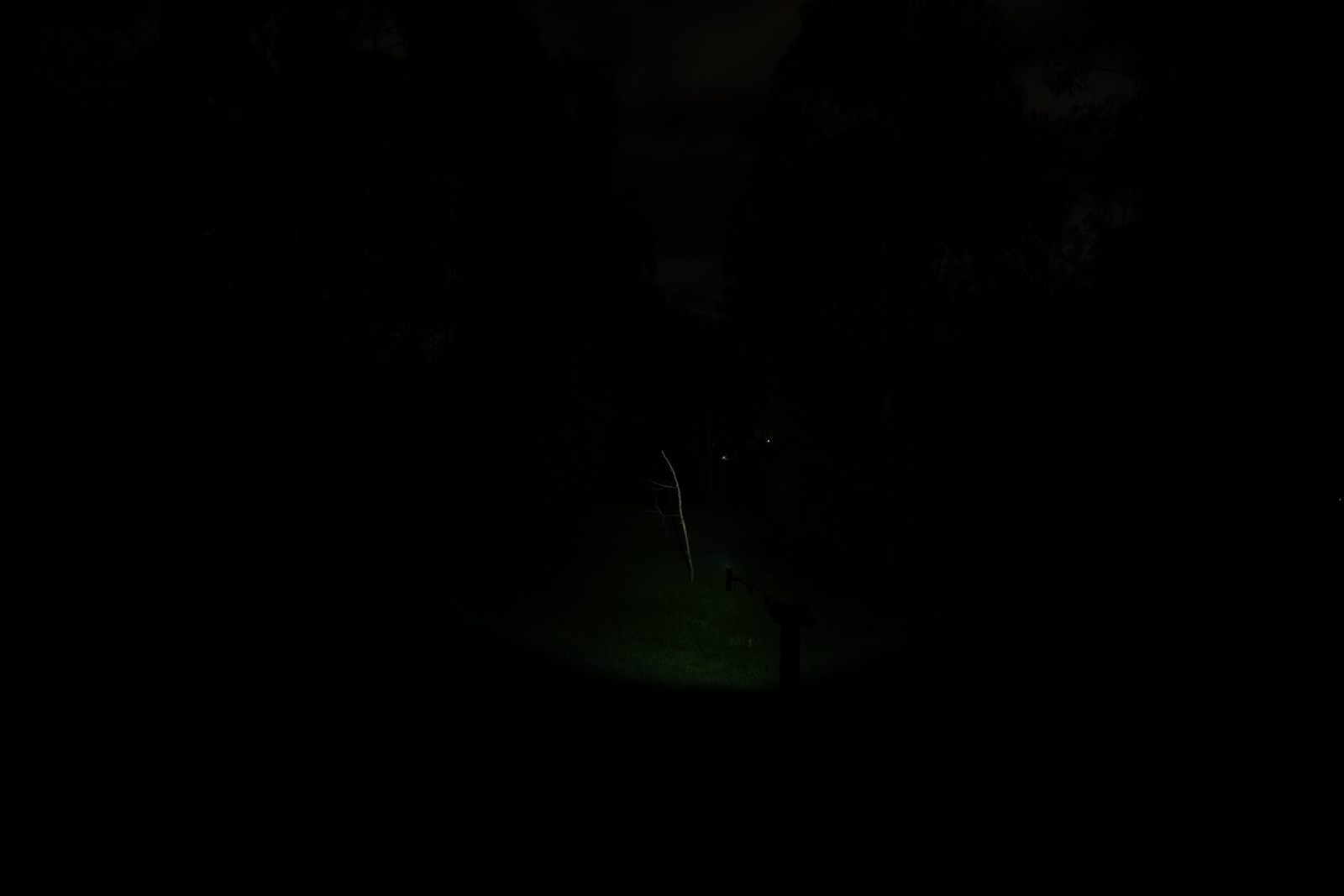
Medium
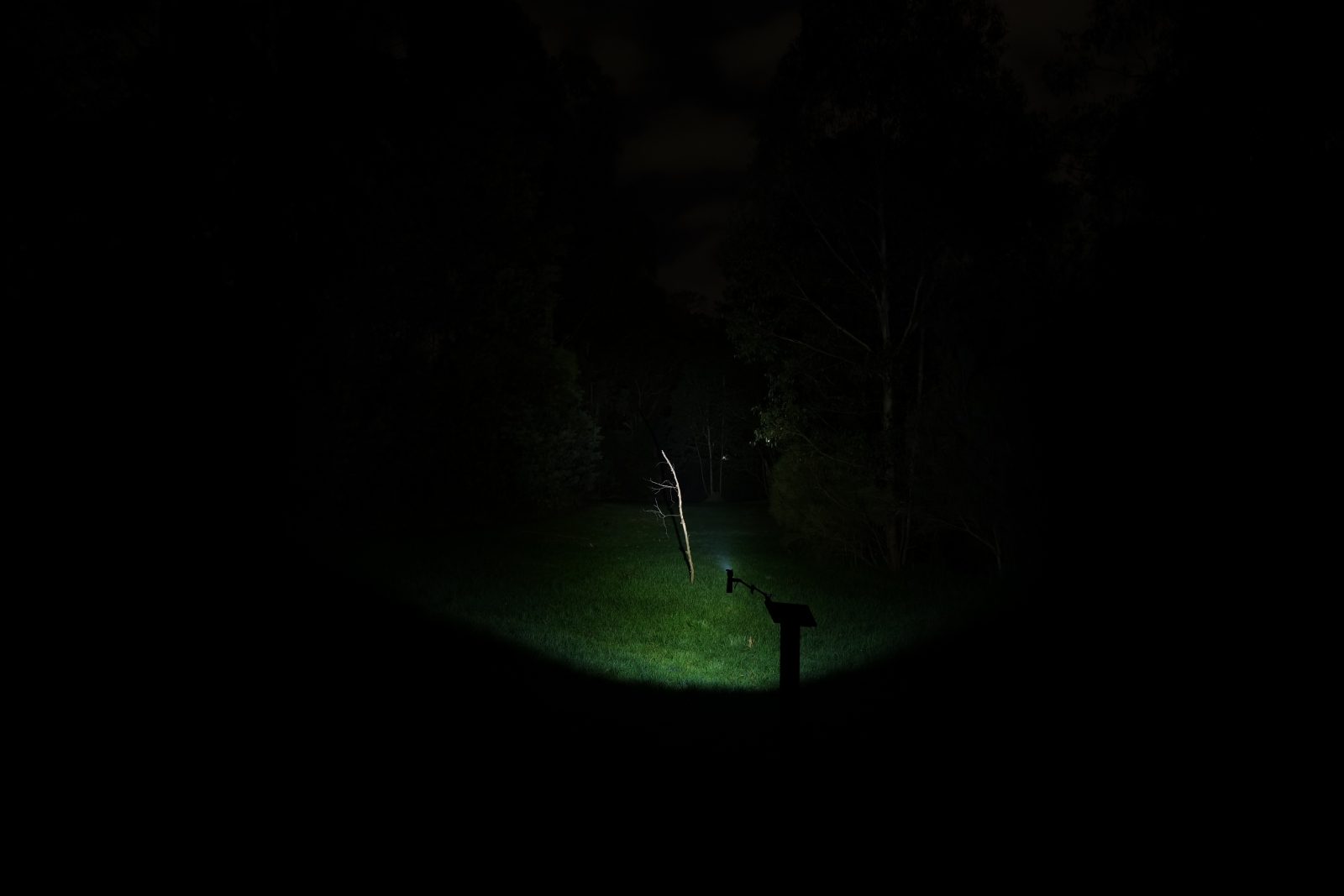
High
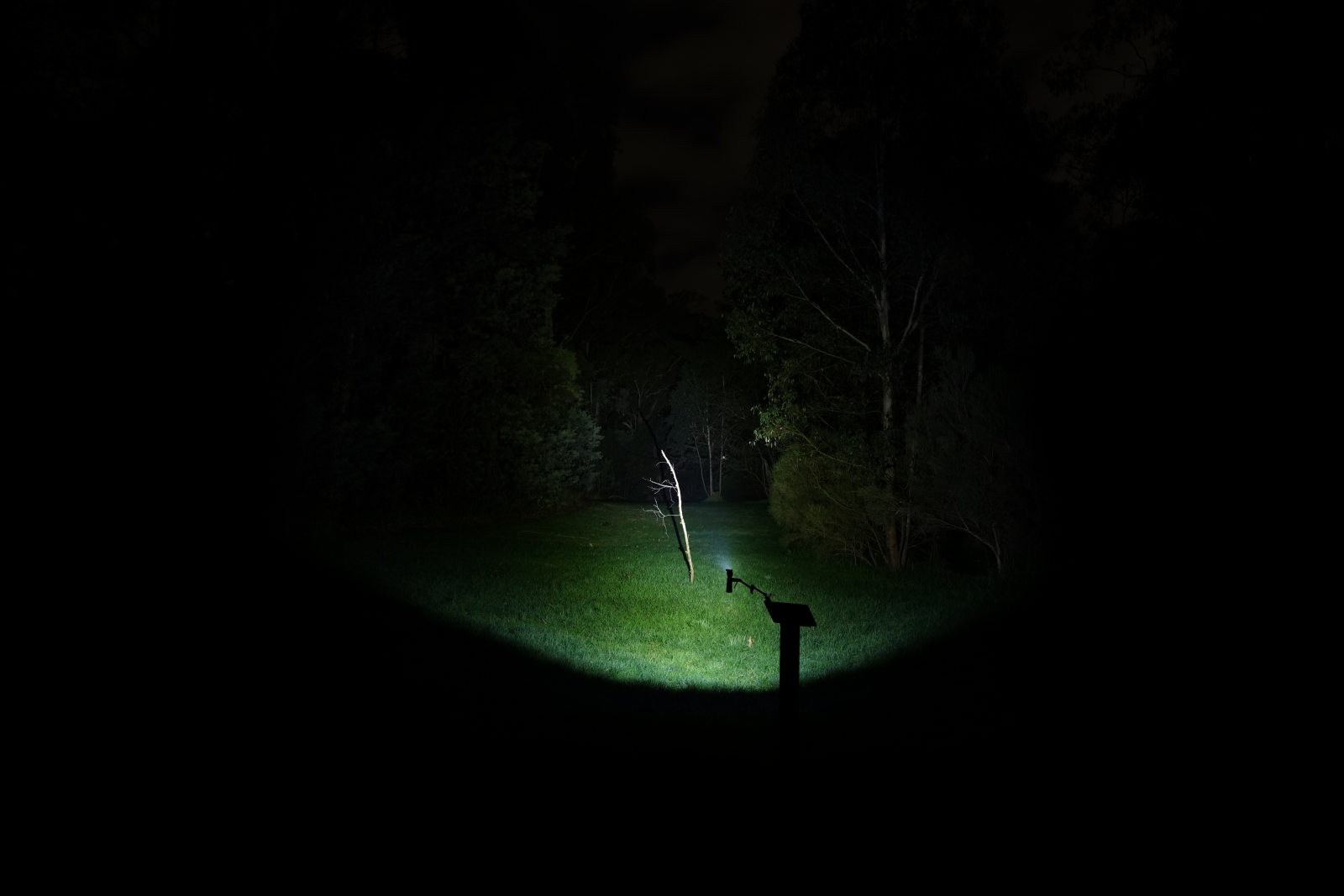
Conclusion#
The Klarus GL5 Foregrip Light is comfortable and easy to use. The runtime for Medium and Low is pretty good. You may want to replace the two CR123A batteries after using the torch on High for an hour. I prefer the extra runtime that you get with an 18650 Li-on battery.
Light output appears to be well regulated until the temperature hits a threshold. It would be nice if the Intelligent Thermal Protection System gradually changed the light output. Currently it reduces and increases the light output every thirty seconds when a temperature threshold has been passed.
This vertical foregrip torch is better than I expected and I am now considering getting a rifle with a chassis system so that I can properly mount it parallel to the barrel.
Thank you liteshop.com.au for providing the Klarus GL5 for review!
Pros:#
- Excellent build quality.
- Comfortable to hold.
- Easy to use.
- Good runtime.
Cons:#
- Low Voltage Protection appears to be missing.
- Thermal Regulation.
Product page#
Promo code: SG9IP8YKT5PI
liteshop.com.au affiliate link
I may earn a commission if you use an affiliate link or a promo code. This will help fund future torch reviews and tutorials.
